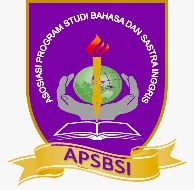Investigating the use of YouTube as virtual teaching medium in ELT among non-English students
Abstract
Since the COVID-19 pandemic came up suddenly to this world, everything takes a drastic turn. The Ministry of Education and Culture Republic of Indonesia reacted to this issue by making an online learning policy Number 3 of 2020 on Prevention of COVID-19 in the Education Unit. Many education institutions adopted this policy by creating online tools such as YouTube as a resource of transition from face-to-face learning to virtual learning since it is seen as a popular medium used in online classes. This research investigates the use of YouTube as a medium in the English 1 course for non-English students at one of State Islamic University in Salatiga. YouTube is an online learning platform that enables lecturers and students to upload, view, share, and even interact through the comments column in the learning videos. A descriptive qualitative method is used to achieve the objective of the research, which involved three classes from the Early Childhood Islamic Education study program, the Islamic Elementary School study program, and the Islamic Religious Education study program as the objects in this research. The researcher limits the content of YouTube from the channel "AR," while the materials are about Degree of Comparison and Collocation. Students' responses from those three classes in the YouTube column have been analyzed to investigate the findings. The finding shows that YouTube brings a good impact on non-English students in ELT. This finding is supported by the result of the analysis answer sheet of the quiz from students, the survey on students’ perception, and other comments about the materials on the YouTube comment column. Finally, it can be concluded that YouTube can be an effective virtual teaching medium in ELT among non-English students at IAIN Salatiga based on the result of survey by respondents.



_.jpg)
_.jpg)




